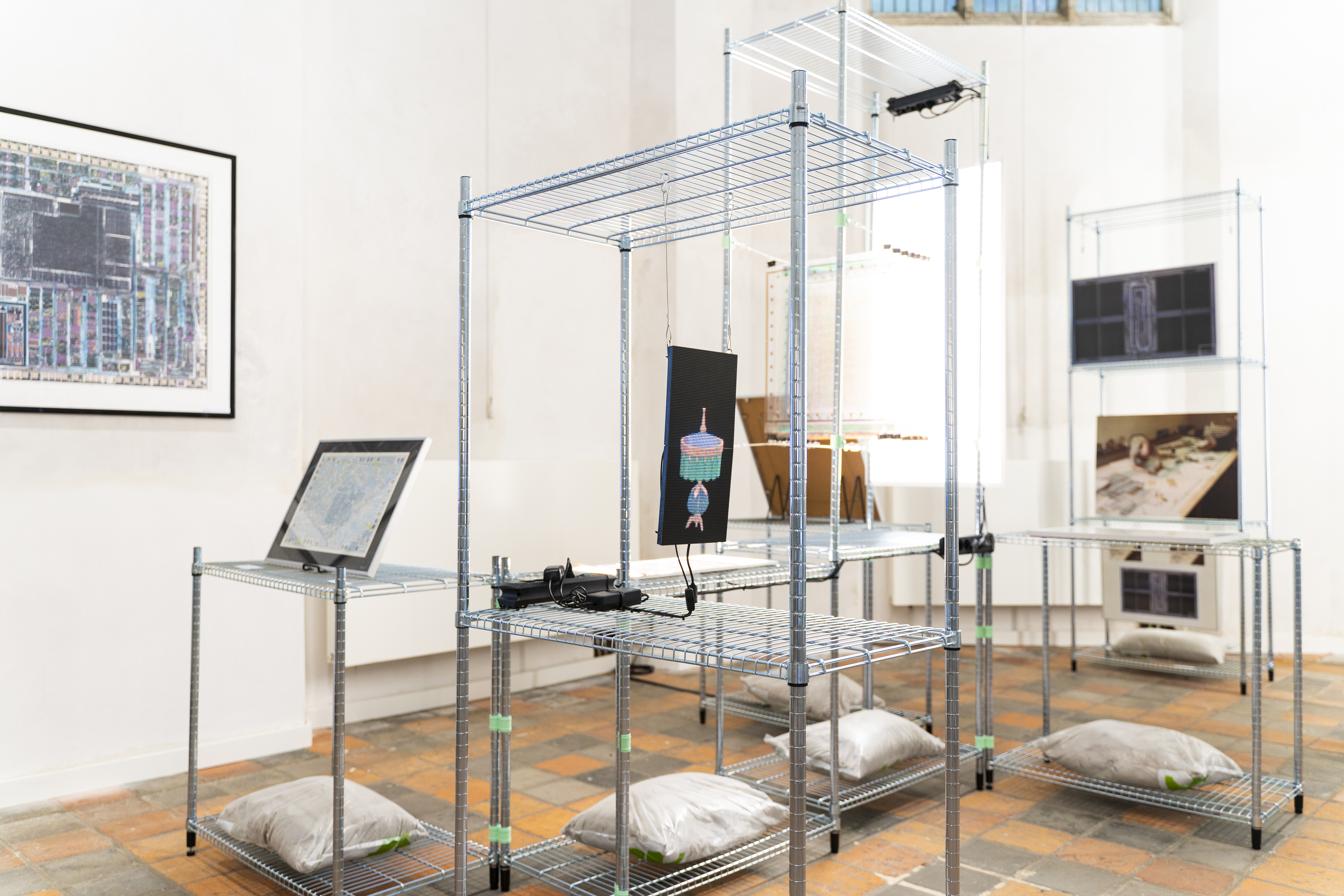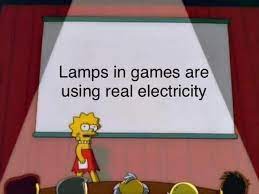Lamps In Video Games Use Real Electricity
10.04.2024
#work#exhibition
#lamps
#meme
Lamps In Video Games Use Real Electricity
LED panels, Raspberry Pi 3b, custom software
2023

Very rarely does anything I consume online stay with me for an extended period of time. The bombardment of image after image, word after word, leaves my over stimulated brain without a handle to hold on to. But this might also say something about my media consumption habits. But in 2020, I saw a meme that perfectly encapsulated something I had been thinking about for a while. It was a meme of Lisa Simpson walking across a stage, a projection screen behind her with the words "Lamps in games are using real electricity" in a black sans-serif typeface projected on to it.

This meme managed to make tangible an interest and research area of mine that I had been struggling to articulate: places where the digital worlds meet, collide and seep into one another so that the distinction between the two becomes blurred and questionable to begin with. Suddenly, after I had seen this meme, lamps in video games were using real electricity. The meme stuck. And even though I probably saw it on a feed, probably pressed the like button, and moved on, there I was, several years later, being commissioned to make a new work for an exhibition about microchips, and this meme came floating back into my mind.
It turns out the meme's statement originated from a subreddit called /showerthoughts, a place "for sharing those miniature epiphanies you have that highlight the oddities within the familiar." It was posted by someone with username 1Ferrox on the 28th of November 2019. Redditors responded with both enthusiasm and skepticism, with some claiming that if only there were less lights in video games we might begin to reduce global emissions and some debunking it through technical explanations of rendering engines and screen construction.
It didn't really matter whether it was true or not to me, it was more about how a simple thought experiment can begin to make you look at an item you may have seen many times over and over in a different light. I have been playing video games since my parents first got a computer and had never really looked at lamps. Yet now all I wanted to do was go back through all those games I had once played and look at the lamps. (In my teenage years I made little films of my video game playing that I can nostalgically look back on.)

And perhaps the fact that I couldn't tell whether it was true or not was also one of its charms. Do lamps in video games really use real electricity? It made me think and consider what I knew about both electricity and video games. But it also made me begin to consider the nature of playing video games. For what truly happens when I turn on a lamp in a video game?
I still don't have a particular answer to this question as I think it could be many, many different things that touch upon many, many different things. But I made an artwork about this meme called 'Lamps In Video Games Use Real Electricity'. It's a series of four lamps made of LED panels connected to a Raspberry Pi. Each lamp displays a flickering image of a different type of lamp from the Sims 3: floor, table, wall and ceiling lamps.
The process of making the lamps somehow reflected the topic that led me to this project in the first place. It involved countless hours trying to synchronise hardware with code with images generated that had been generated by video games. Whilst the LED matrices that I used were quite hard to understand and their inner-workings still mostly hidden away, it was an exercise of getting to know how things appear as images on a screen. It was an exercise in understanding how something so ubiquitous as light became a technical problem to solve when it appeared on screens in computer simulated environments.
It's been several months since the exhibition ended and whilst I haven't had much time to play video games since, the moments in which I have been able to play have been noticably influenced by knowledge of these mechanics. Somehow now the game environment becomes more interesting than the story. How has the designer decided to light the interior of this space? How do the physics of the world play out in the movement of wind through grass? What does this say about the world that I am playing in and what does it say about the world outside of that? Again, no answers...just more questions.
Back…